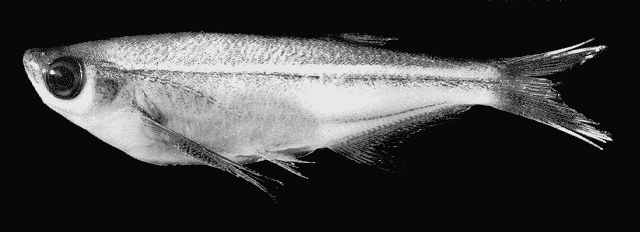| Xenocyprididae (East Asian minnows) |
| 20 cm SL (male/unsexed) |
|
pelagic; freshwater |
| Asia: Indochina, Thailand to Borneo and Java. |
|
Dorsal fin origin above the 3rd and 4th anal-fin ray; pectoral fin large with dark distal margin, extending beyond tip of pelvic fin; 31-33 branched anal-fin rays; dark outline on first few lateral canals; 20-21 gill rakers on 1st arch (Ref. 12693). Abdomen more or less greatly arched, with a sharp keel. Lower jaw with a symphyseal knob fitting into an emargination of symphysis of upper jaw. No barbels. Lateral line greatly recurved (Ref. 4792). |
| Lives in rivers and lowland wetlands including peat canals (Ref. 57235). Found in medium to large-sized rivers and is a common resident of seasonally flooded forest. Leaves the flooded forest in November as the water levels begin to decline substantially. Seems to be more tolerant of high amounts of suspended solids than P. maculicauda or P. williaminae and are more common in habitats disturbed by farming activities. Feeds on zooplankton, insects (Ref. 12693) and fish (Ref. 56749). Normally sold in markets held side by side in a piece of split bamboo. Good for Tieo pa ka tao and extensively used for making padek (Ref. 7050). |
|
Least Concern (LC); Date assessed: 10 April 2020 Ref. (130435)
|
| harmless |
Source and more info: www.fishbase.org. For personal, classroom, and other internal use only. Not for publication.
